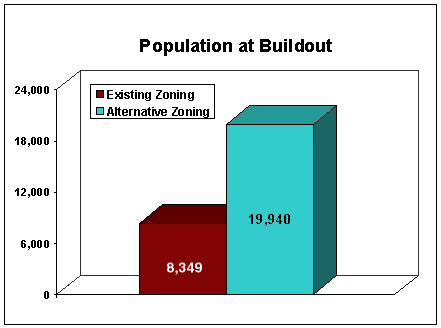 The number of housing units under the two scenarios.
The number of housing units under the two scenarios.
Here we have modelled the number of housing units under the two zoning scenarios. Housing units correlates with the total population size.
Whats the difference?
The number of housing units and hence population size is actually greater under the alternate zoning model at buildout. This is despite larger parts of the alternative-zoning file being protected as open space.
Why this difference?
The difference is due to the fact that the traditional zoning file has new residential development areas as large lot size. This take up a lot of land to build residential areas for relatively few people. While the alternative zoning file uses much smaller clustered development to increase the total population while decreasing the amount of land used.
What will it mean?
The total population of a municipality has some important effects on the environment. Including air pollution, water pollution, and water withdraw from aquifers and reservoirs. But the population of an area does not exactly correlate with environmental pollutants. Factors such as impervious surface are highly dependent on a building concept and can be lowered despite an increase in population.
Let's take a look at some build-out stats for vehicle miles travelled. 
